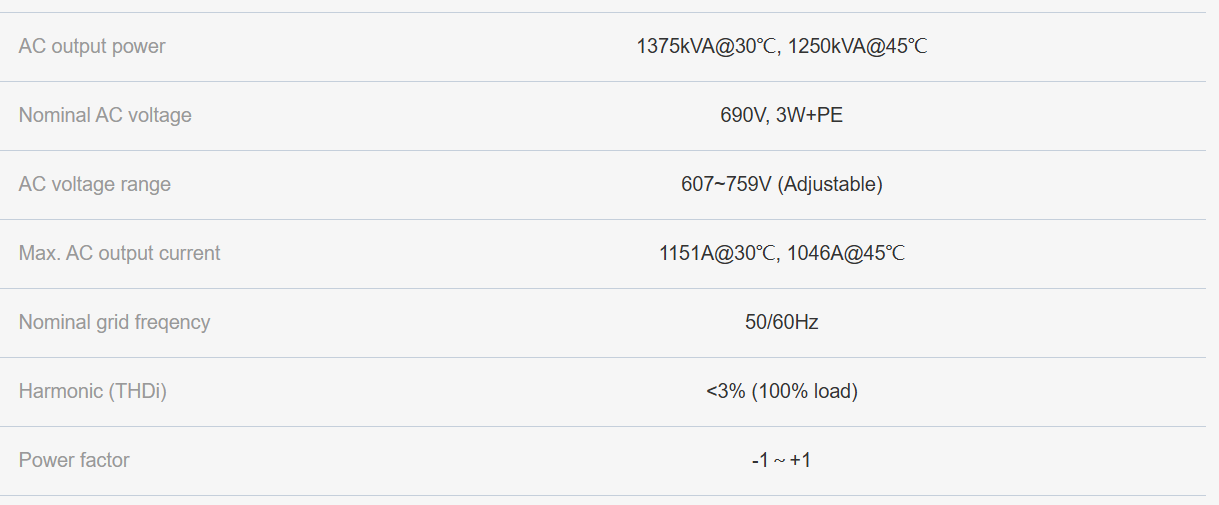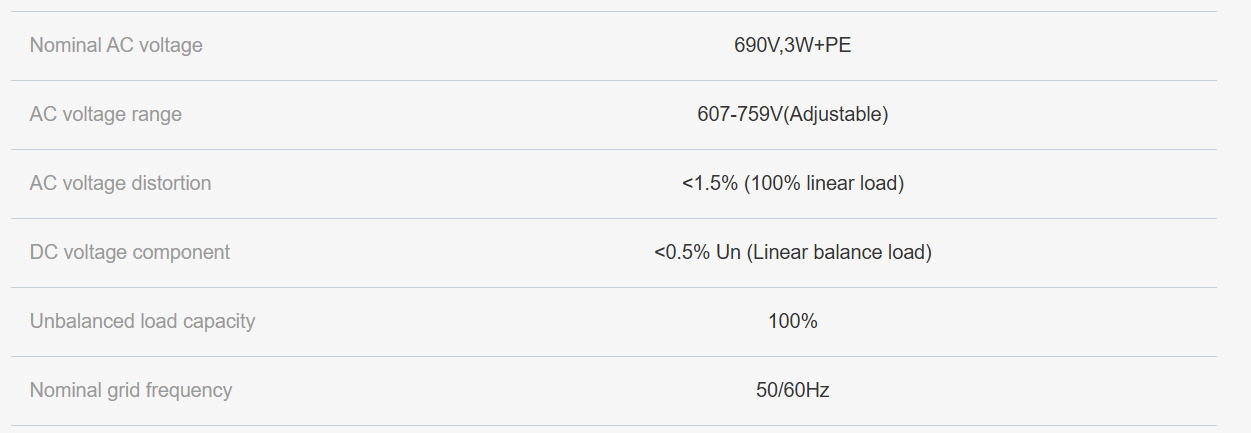| Brand | Wone |
| Model NO. | Central Power Conversion System(PCS, 1500V) |
| Max.Efficiency | 99% |
| AC output power | 1250kVA |
| Max. DC voltage | 1500V |
| Max. DC current | 1403A |
| Max. AC output current | 1046A |
| Series | Power Conversion System |
Features
Max. efficiency up to 99%.
Full reactive power four-quadrant capability.
IP65 protection degree .
Black start ability.
Support VSG function.
Millisecond-level Power response to EMS/SCADA.
Three level topology.
Use alone or in combination with MV station.
DC Parameters:

AC parameters (On-Grid):

AC parameters (Off-Grid):

General data:

What is the VSG function of an energy storage converter?
The Basic Principles of Virtual Synchronous Generator (VSG)
Simulating the Behavior of Synchronous Generator:VSG technology enables the energy storage converter to simulate the dynamic characteristics of traditional synchronous generators, including inertial response, damping characteristics, and frequency regulation ability, through control algorithms.
Inertial Response:Synchronous generators possess mechanical inertia. When the grid frequency changes, the kinetic energy of the generator rotor can temporarily absorb or release energy, thus stabilizing the frequency. VSG simulates this inertial response by controlling the output power of the energy storage converter, enhancing the frequency stability of the grid.
Damping Characteristics:Synchronous generators have damping characteristics that can suppress frequency oscillations. VSG simulates this characteristic by introducing a damping control algorithm, further improving the stability of the system.
Frequency Regulation:VSG can actively participate in the frequency regulation of the grid. By adjusting the output power of the energy storage converter, it helps the grid to return to the rated frequency.






